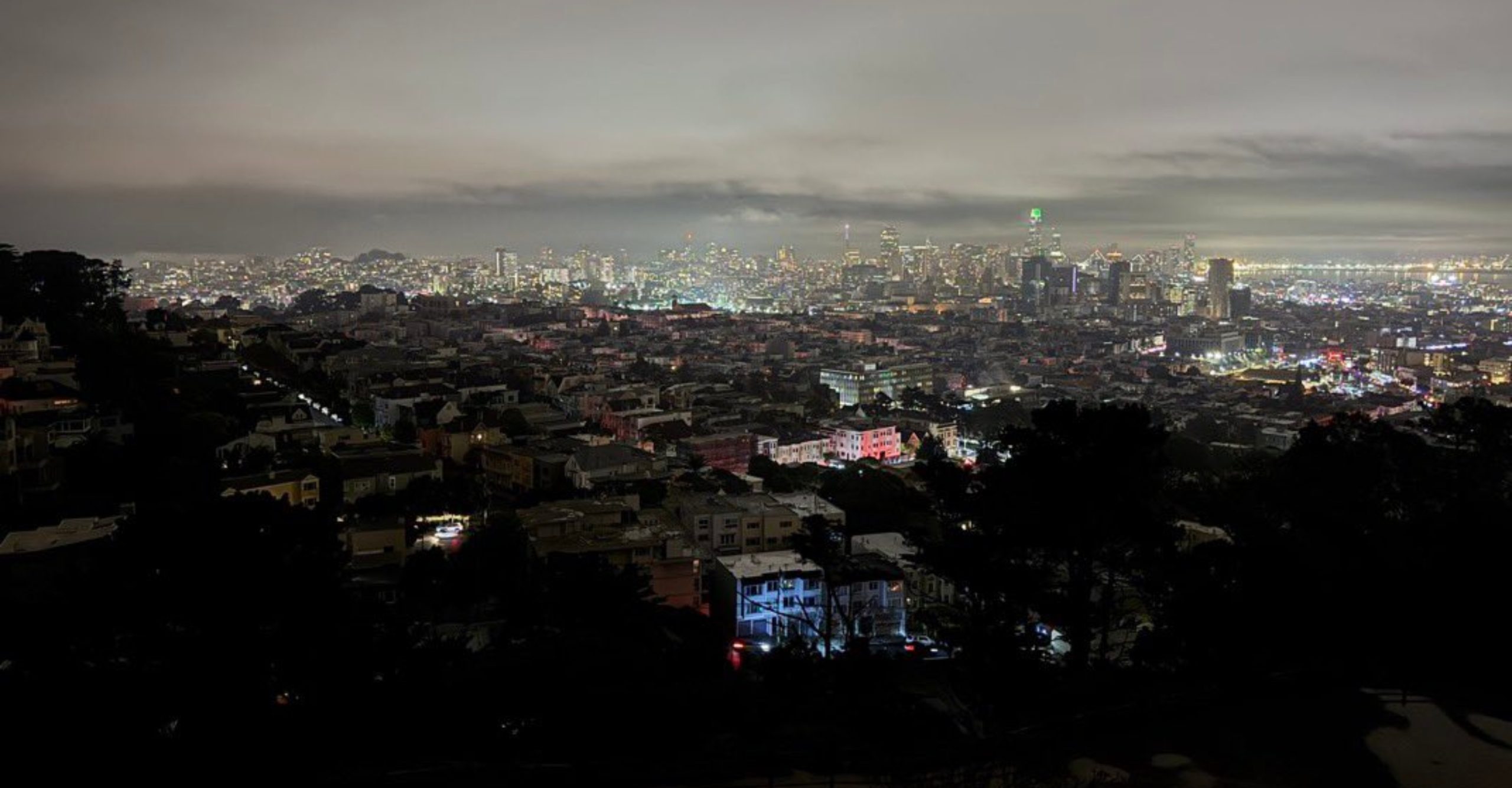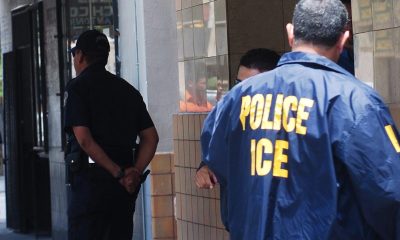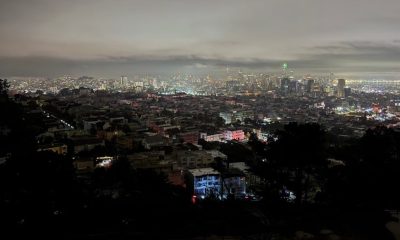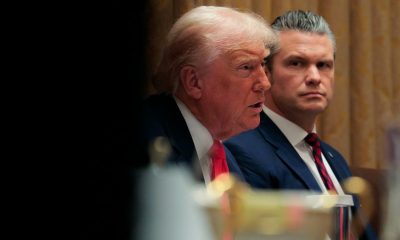International
The director of the RAE asks to take care of Spanish in AI so that they do not create their own dialects
The director of the Royal Spanish Academy (RAE) and president of the Association of Academies of the Spanish Language (Asale), Santiago Muñoz Machado, called for taking care of the development of artificial intelligence (AI) so that machines speak Spanish in the most correct way possible and at the same time prevent their algorithms from creating digital dialects that would constitute “a great break for the unity of the language”.
“It is important that machines, which are a growing number of non-human individuals who use our language, do so in the best possible way,” Muñoz Machado said in an interview with EFE during the celebration in Quito of the XVII Congress of the Asale, in which issues such as the challenges and opportunities of Spanish in the face of new technologies and the digital world will be discussed.
The Spanish jurist considered that for this there is “a competitive advantage: none of the technology companies that have machines that speak is interested in speaking badly, in the same way that no school or university is interested in having students who do not handle the language well.”
“Large technology companies are not interested in having illiterate people. To help them not have them, what we tell them is that, when they teach the machines to speak Spanish, they use the tools of the language academies, and in that way the machines will speak a language just like that of humans,” explained Muñoz Machado.
Spanish and AI
The director of the RAE admitted that, for the moment, they have not detected major deviations in artificial intelligence, with respect to the canon that the academies establish.
“(But) we must take care of this and that it remains so, because it would be feasible for the algorithms that handle artificial intelligence to determine variations of the language that would ultimately create digital dialects of artificial intelligence, not unintelligible from the common Spanish language,” warned Muñoz Machado.
“That would be a great breakdown of the unity of the language and an unbearable injury to a language that they speak now and with which 600 million people understand. It would be very serious if it happened, but I think there is no will or interest in it happening, not even economically,” he concluded.
In that sense, he emphasized that the scenario that these machines could create languages derived from Spanish, as well as other languages, that only they understood is not science fiction, because “everything that comes out in this matter is happening now.”
AI to detect new words
The jurist, who has directed the RAE since 2018, recalled that in the previous Asale congress, held in 2019 in Seville (Spain), the Spanish Language and Artificial Intelligence (LEIA) project was already created.
“In recent years we have had great revolutions that can affect the tools we use for the general regulation of the language, especially the digital revolution and artificial intelligence. We have opened up to them immediately,” he said.
Thus, they have also seen with AI an opportunity to use this technology to detect new terms and forms of expression that arise and that do not reach them through traditional channels.
The digital revolution has also led to the appearance of new words to name elements or phenomena that did not exist before, most Anglo-Saxon terms that do not generate fear in the academies of the Spanish language.
A mixed language
“It is not a great tragedy because Spanish has always been mestizo, a language very given to incorporating terms from other languages from its origins. He already incorporated many Arabic words and other neighboring languages. And in countries like the Americans it has terms of their original languages,” Muñoz Machado said.
“We’re not too worried. The ‘Dictionary of the Spanish Language’ has 94,000 entries and 189,000 meanings. Every year we incorporate a maximum of a dozen new terms from English, and we also incorporate them raw, without Castilianizing or Spanishizing them, in the same way they mean in English. We enrich the language in that way and nothing happens,” he added.
However, the director of the RAE emphasized that “a different thing is to use English expressions that have equivalent in Spanish only for snobbery or to show a certain knowledge of that culture in an unnecessary and harmful way for the quality and integrity of our language”
At the Asale congress, among other novelties, a ‘Pan-Hispanic Guide to Clear Language’ will also be presented, with the aim that the official communications of the institutions can be understood by any citizen and that they can thus exercise “the right to understand,” as Muñoz Machado defined it, “which is the basis of the exercise of other rights.”
International
Trump Orders Construction of New ‘Golden Fleet’ to Revitalize U.S. Naval Superiority

President Donald Trump issued an executive order this Monday for the immediate construction of two new warships that will bear his name. These vessels will be the pioneers of what he described as the “Golden Fleet,” a future generation of “Trump-class” battleships that he claimed would be “100 times more powerful” than those currently in service.
The announcement took place at his private residence in Mar-a-Lago, Florida. The President indicated that following the initial two ships, the administration aims to commission up to 25 additional vessels. He is scheduled to meet with Florida-based contractors next week to expedite production, criticizing existing defense firms for failing to deliver results efficiently.
This naval expansion is a cornerstone of Trump’s goal to revitalized the American shipbuilding industry and address the strategic gap between the U.S. and competitors like China.
The move comes amid heightened geopolitical tension. Just last week, Trump ordered the seizure of all sanctioned tankers involved with Venezuela’s “ghost fleet” to cripple the country’s crude oil industry. Since December 10, the U.S. military—deployed in the Caribbean under the guise of counter-narcotics operations—has already detained two tankers linked to Venezuelan oil transport.
International
U.S. Judge Blocks ICE from Re-detaining Salvadoran Erroneously Deported Under Trump Administration

A U.S. federal judge ruled this Monday, December 22, that Immigration and Customs Enforcement (ICE) is prohibited from re-detaining Salvadoran national Kilmar Ábrego García, who was erroneously deported to El Salvador earlier this year during the administration of President Donald Trump.
During a hearing in Maryland, U.S. District Judge Paula Xinis ruled that Ábrego García must remain free on bail through the Christmas holidays, concluding that his initial detention lacked a legal basis. The ruling follows a request from his legal team for a temporary restraining order to prevent ICE from carrying out a new arrest.
Earlier this month, on December 11, Judge Xinis ordered his release from a Pennsylvania migrant detention center after determining that the government had detained him without a formal deportation order. In 2019, an immigration judge had already ruled that Ábrego could not be returned to El Salvador because his life was in danger.
Despite that protection, Ábrego García was deported in March 2025 following a raid by the Trump administration. Officials argued at the time that he was a gang member, and he was sent directly to the Center for the Confinement of Terrorism (CECOT) in El Salvador. In June, he was returned to the United States to face a new trial for alleged human smuggling—a charge he denies.
On Monday, Judge Xinis also temporarily invalidated a new deportation order issued by an immigration judge following Ábrego’s recent release, granting him legal protection through the coming weeks. His trial is scheduled to begin in Tennessee in January 2026.
International
Fire at substation triggers major blackout in San Francisco

The U.S. city of San Francisco was plunged into darkness Saturday night after a power outage left about 130,000 customers without electricity, although the utility company said service was restored to most users within hours.
Pacific Gas & Electric Company (PG&E) said in a statement posted on X that nearly 90,000 homes had their power restored by 9:00 p.m. local time (05:00 GMT on Sunday), while the remaining 40,000 customers were expected to have service restored overnight.
Large areas of the city, a major technology hub with a population of around 800,000, were affected by the blackout, which disrupted public transportation and left traffic lights out of service during the busy weekend before Christmas, a crucial period for retail businesses.
“I know it’s been a difficult day,” San Francisco Mayor Daniel Lurie said in a video posted on social media from the city’s emergency operations center. “There has been progress, but for those still without power, we want to make sure they are safe and checking in on their neighbors,” he added.
Lurie said police officers and firefighters advised residents to stay home as much as possible. He also noted that officers and traffic inspectors were deployed to manage intersections where traffic lights were not functioning.
The mayor confirmed that the outage was caused by a fire at an electrical substation. Parts of the city were also covered in fog, further complicating conditions during the incident.
As a result of the blackout, many businesses were forced to close despite it being the weekend before Christmas. The sudden drop in shopper traffic ahead of the holiday is “devastating” for retailers, the manager of home goods store Black & Gold told the San Francisco Chronicle.
-

 International5 days ago
International5 days agoPentagon confirms Trump pick for SouthCom as U.S. military pressure grows
-

 International2 days ago
International2 days agoU.S. Judge Blocks ICE from Re-detaining Salvadoran Erroneously Deported Under Trump Administration
-

 International4 days ago
International4 days agoCristina Kirchner recovering after appendicitis surgery in Buenos Aires
-

 International4 days ago
International4 days agoFire at substation triggers major blackout in San Francisco
-

 International2 days ago
International2 days agoTrump Orders Construction of New ‘Golden Fleet’ to Revitalize U.S. Naval Superiority
-

 International5 days ago
International5 days agoArgentina detects first local cases of Influenza A (H3N2) Subclade K




























